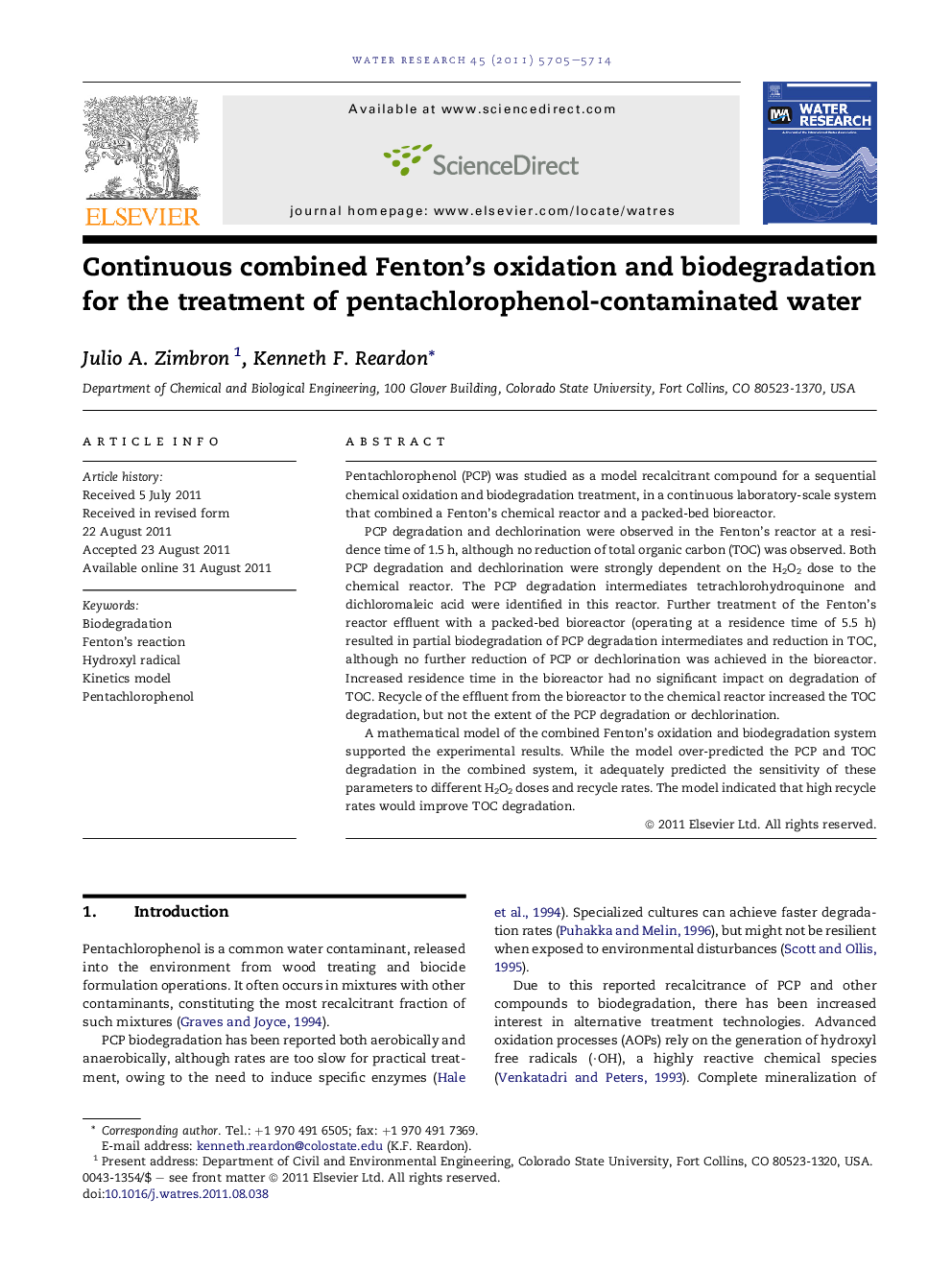| کد مقاله | کد نشریه | سال انتشار | مقاله انگلیسی | نسخه تمام متن |
|---|---|---|---|---|
| 4483190 | 1316880 | 2011 | 10 صفحه PDF | دانلود رایگان |

Pentachlorophenol (PCP) was studied as a model recalcitrant compound for a sequential chemical oxidation and biodegradation treatment, in a continuous laboratory-scale system that combined a Fenton’s chemical reactor and a packed-bed bioreactor.PCP degradation and dechlorination were observed in the Fenton’s reactor at a residence time of 1.5 h, although no reduction of total organic carbon (TOC) was observed. Both PCP degradation and dechlorination were strongly dependent on the H2O2 dose to the chemical reactor. The PCP degradation intermediates tetrachlorohydroquinone and dichloromaleic acid were identified in this reactor. Further treatment of the Fenton’s reactor effluent with a packed-bed bioreactor (operating at a residence time of 5.5 h) resulted in partial biodegradation of PCP degradation intermediates and reduction in TOC, although no further reduction of PCP or dechlorination was achieved in the bioreactor. Increased residence time in the bioreactor had no significant impact on degradation of TOC. Recycle of the effluent from the bioreactor to the chemical reactor increased the TOC degradation, but not the extent of the PCP degradation or dechlorination.A mathematical model of the combined Fenton’s oxidation and biodegradation system supported the experimental results. While the model over-predicted the PCP and TOC degradation in the combined system, it adequately predicted the sensitivity of these parameters to different H2O2 doses and recycle rates. The model indicated that high recycle rates would improve TOC degradation.
Figure optionsDownload high-quality image (55 K)Download as PowerPoint slideHighlights
► Combined pertachlorophenol treatment by Fenton’s oxidation and biodegradation was modeled.
► PCP was chemically degraded but not biodegraded.
► Fenton’s treated non-PCP TOC was biodegraded. Biodegradability of individual PCP by-products varied.
► The combined model supported process integration through the use of higher recycle rates.
Journal: Water Research - Volume 45, Issue 17, 1 November 2011, Pages 5705–5714